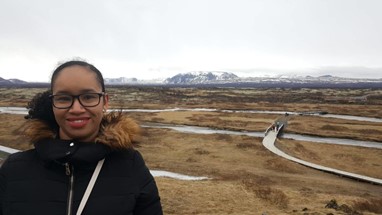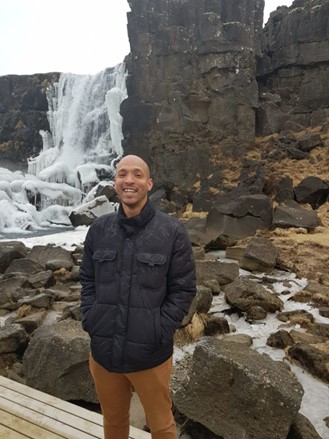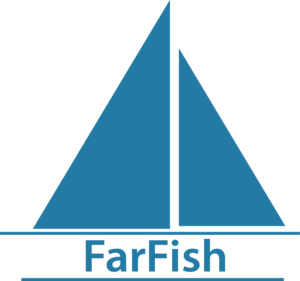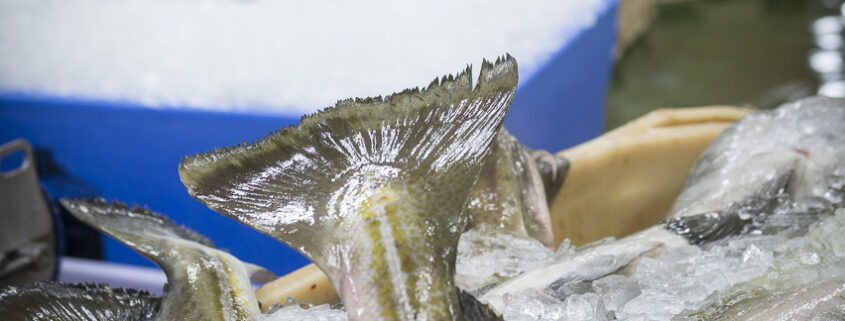GRÓ-FTP training
This is an ongoing course
As part of the FarFish project, the UNESCO GRÓ-Fisheries Training Programme has committed to invite 5 expert researchers from FarFish case study countries for its 6 month post-graduate training programme in Iceland.
This intensive, six month post-graduate training programme targets experienced fisheries professionals from developing countries. The programme offers specialisations in four different fields of fisheries and aquaculture; namely stock assessment and gear technology, quality management in fish handling and processing, fisheries policy and management, and sustainable aquaculture. The training consists of a one-week orientation, a 5 week introductory course, a six week specialist course and an individual research project. Apart from local lecturers, world renowned experts in different fields of fisheries are invited as guest lecturers each year.
Built on Training Needs Assessments conducted early on in the FarFish project, the GRÓ-FTP selected candidates from partner organisations in Cabo Verde, Senegal, Mauritania, and Seychelles to participate. There research projects are available on the groftp.is website.
One of the FTP fellows from Cabo Verde selected to participate in the six-month training was Ms. Alicainy da Luz.
Alciany is a marine biologist working at INDP in Mindelo. Her research conducted through the UNU-FTP related to the creation of an age-length key for the blackspot picarel, an important species in the artisanal sector in Cabo Verde. Though INDP had collected otoliths from the blackspot picarel for several years, these samples had never been analysed. Alciany took on the ambitious task to analyse otoliths from 134 specimens and along the way, create a procedure which will guide the ageing of similar samples in the future.

Below is the abstract from Alciany’s work.
Blackspot picarel (Spicara melanurus) is a fish species from the Sparidae familyand is an important species for the artisanal fisheryin Cape Verde.Despite being commercially important, stock assessment is not performed for this species due to limited knowledge oflife storytraitsand a lack of methodology to investigate the age ofthe species.In this study, methodology to estimate ageof blackspot picarelfromCape Verde waters, was investigatedby counting otolith increments and by measuring otolith size. Otoliths from 134 specimensranging in fork length from 4.5 cm to 29 cm were analysed. Increments becamevisible once the otolith wassectioned,polished, image taken,andthe image enhanced. An age-length key was produced. The precision of the ageing method was estimated by replicating increment count for 23% of otoliths. For replicas, the mean coefficient of variation was 8.76%which is acceptable. The maximum age estimated was 17 years and the von Bertalanffy growth parameterswere 𝐿∞=36.17𝑐𝑚, 𝑘=0.09𝑦𝑒𝑎𝑟−1, 𝑡0=0.89𝑦𝑒𝑎𝑟. This suggests that blackspot picarel is a slow-growing and a long-livedspecies. Maturity-at-age was 7.1 years. The relationship between specimen length and otolith dimension, and between specimen age and otolith dimensions was strong and explained 89% or more of variance in otolith dimensions. The age-length key, maturity-at-age, and growth rate provide vital information for stock assessment.
Another one of the FTP fellows from Cabo Verde selected to participate in the six-month training was Mr. Nuno Vieira.
Nuno is a biologist and ocean specialist with the INDP and the Ocean Science Centre of Mindelo (OSCM). His research with the UNU-FTP related to a recent decline in the stock of mackerel scad, a small pelagic fish with significant economic importance to the Cabo Verdean economy. Nuno‘s study aimed to determine if the decline in catches in recent years could be better attributed to fishing pressure or environmental factors. The results of his research will have clear implications on how the stock is managed in the future.

Below is the abstract from Nuno’s work.
Makerel scad is one of the most important small pelagic fisheries in Cape Verdean waters, having enormous social and economic importance, and is used as bait and food and in the canning industry. INDP official landing data recorded between 1989 to 2015 indicate that mackerel scad made up almost 40 % of Cabe Verdean total catches at the peak of its fishery in 1997 and 1998. After this peak the catch decreased significantly, especially in the last six years, representing only 6.6 % of landings in 2015 or 642 tonnes. The main goal of this study was to assess if the fluctuations and recent decline in mackerel scad catch in Cape Verdeans waters are caused by harvesting or by changes in environmental parameters. The data analysed was provided by reconstructed catch data during the time frame 1950 to 2014 from the research initiative Sea Around Us, official landing and effort data from INDP in the period from 1989 to 2015, biological data from INDP in the period 1989 to 2018, and sea surface temperature and chlorophyll-a from satellite observation. The growth parameters K and L∞, the recruitment pattern and the total mortality were computed in the software FISAT II, the biomass was estimated by the Shaefer model using the Sea Around Us reconstructed catch data and CPUE data from INDP for both fleet, and simple linear regression was applied to see the correlation between the catch data and environmental parameters. The growth parameters computed from FISAT II indicate L∞ = 40.6 cm, K = 0.450 year-1, Z = 3.23 year-1, F = 2.31 year-1, M = 0.92 year-1. The biomass estimated by the Shaefer model indicate an MSY of 5,619 tonnes using the Sea Around Us catch and artisanal CPUE from INDP, and 5,686 tonnes using the Sea Around Us catch and industrial CPUE from INDP. The correlation between catch and environmental parameters, showed an R2 = 0.043 when catch is correlated with sea surface temperature, and R2 = 0.21 when catch is correlated with chlorophyll-a. There are indicators that the stock is declining, but not conclusive, hence the fishing effort should be reduced until more information is known. The stock did not show strong links to environmental factors, further studies and improved sampling procedures are recommended to get more information on the stock.
Dr. Kamarel Ba is a scientist with ISRA/CRODT in Senegal, a FarFish partner.
He conducted research through the GRÓ Fisheries Training programme in Iceland on a topic quite relevant for the FarFish project:

Below is the abstract from Kamarel’s work.
Shared by three countries (Morocco, Mauritania and Senegal), the black hakes (Merluccius polli and M. senegalensis) stocks are some of the most important resource exploited in northwest African waters. Since they resemble each other and are caught together in high proportions, the fisheries statistics record them as one species. The catches were high in the 1970s before sharply declining since 1980 as a result of an intense exploitation by the domestic and foreign vessels using bottom-trawls and longlines. Each of these countries has its own records about catch, efforts, CPUE and catch composition which generally led to pooled stock assessments during CECAF Working Groups. This study attempts to perform stock assessments using regional data (catches in metrics and in length composition) from FAO reports and data-limited methods such as Catch-MSY and Length-Based Spawning Potential Ratio (LBSPR)model as a preliminary work in order to compare reference points with existing literature and consolidate them for the fisheries management purpose. The objectives of this study were to (1) obtain information about life history parameters of both species from literature review, (2) estimate natural mortality rate M and M/k using data-limited methods, (3) provide recommendations based on assessments of black hakes using Catch-MSY and LBSPR models. Sensitivity analyses were also performed to test the reliability of the results according to some changes in the input parameters. The results from Catch-MSY assessments showed that the MSY ranged between 19,400 and 29,150 tonnes, according to the scenarios. The BMSY values were very high (137,000-352,000 tonnes), resulting in a high carrying capacity K. However, the intrinsic growth rates were very low (0.12 to 0.30). For the LBSPR assessments, the spawning potential ratio appeared too low (SPR < 0.2) for most cases suggesting recruitment overfishing. Finally, this study recommends to update life history parameters (L50, L95, k,L∞, t0and M) regarding both species for stock assessment purpose and separate the two species in the fisheries departments statistics (catches, effort, CPUE and length frequencies) which could help scientists to assess them individually and give management advices based on accurate data




